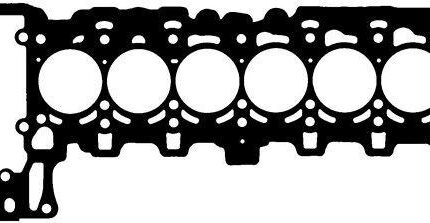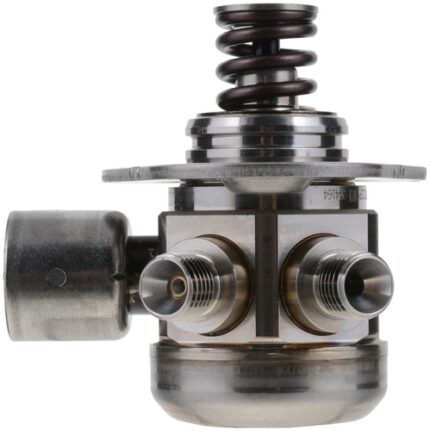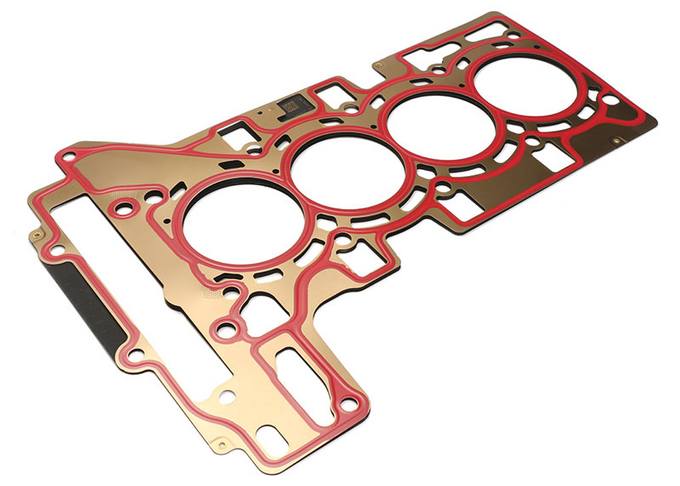-9%
Get BMW 225i 328i 320i Cylinder Head Cover Gasket 11127620696 in Kenya
The cylinder head cover gasket, also known as the valve cover gasket, is a small but essential component of an internal combustion engine. It plays a crucial role in sealing the cylinder head cover (or valve cover) to the top of the engine cylinder head, preventing oil leaks and ensuring a proper seal. While often overlooked, a faulty gasket can lead to oil leaks, engine misfires, and even long-term engine damage.
In this guide, we’ll explore the function, types, common issues, and maintenance tips for the cylinder head cover gasket to help you understand its importance in keeping your engine running smoothly.
2. What is a Cylinder Head Cover Gasket?
A cylinder head cover gasket is a rubber or silicone seal placed between the valve cover and the cylinder head. It prevents engine oil from leaking while also keeping dirt and debris from entering the engine.
The valve cover itself sits on top of the cylinder head, covering the camshafts, rocker arms, and other components. Since oil is constantly circulating inside the engine, the gasket ensures a tight seal to keep everything contained within the system.
Key Functions:
- Seals the Cylinder Head Cover – Prevents oil leaks by sealing the gap between the cover and the cylinder head.
- Maintains Oil Pressure – Helps retain oil within the engine to ensure proper lubrication.
- Prevents Contaminants from Entering the Engine – Stops dust, dirt, and debris from affecting engine performance.
3. Types of Cylinder Head Cover Gaskets
Different engines use different types of head cover gaskets, depending on design and material requirements.
A. Rubber Gaskets
- Made from durable rubber material.
- Common in modern vehicles due to flexibility and ease of installation.
- Provides a strong seal but may harden over time.
B. Silicone Gaskets
- More heat-resistant than rubber gaskets.
- Often used in high-performance engines.
- More expensive but offers better durability and sealing properties.
C. Cork Gaskets
- Found in older vehicles or classic cars.
- Offers good sealing but tends to degrade faster than rubber or silicone.
D. Metal-Reinforced Gaskets
- Combines rubber or silicone with metal reinforcements.
- Provides extra strength and longevity.
- Common in high-performance or heavy-duty engines.
4. Common Causes of Cylinder Head Cover Gasket Failure
Like all engine components, the head cover gasket is subject to wear and tear. Some common causes of failure include:
A. Heat Exposure
Engines generate a lot of heat, which can cause rubber gaskets to harden, crack, or shrink over time.
B. Oil Contamination
Prolonged exposure to hot engine oil can degrade the gasket material, leading to leaks.
C. Improper Installation
If the gasket isn’t installed correctly or overtightened, it can lead to uneven pressure and premature failure.
D. Old Age
Over time, gaskets naturally degrade, becoming brittle and losing their ability to seal properly.
5. Symptoms of a Failing Cylinder Head Cover Gasket
A worn or damaged gasket can lead to several issues, including:
A. Oil Leaks
- The most common symptom of a failing head cover gasket.
- Oil may leak onto the cylinder head, spark plugs, or surrounding engine components.
B. Burning Oil Smell
- Leaking oil can drip onto the exhaust manifold, causing a burnt oil odor.
C. Engine Misfire
- If oil seeps into the spark plug wells, it can cause ignition issues and engine misfires.
D. Low Engine Oil Levels
- Continuous leaks can lead to lower oil levels, which can result in engine damage if not addressed.
E. Check Engine Light
- Some modern vehicles may trigger a check engine warning if oil contamination affects sensors or ignition components.
6. How to Inspect and Replace a Cylinder Head Cover Gasket
A. Inspection Steps:
- Look for Oil Leaks – Check around the cylinder head cover for oil seepage.
- Check for Cracks or Hardening – A hardened or brittle gasket is a sign of wear.
- Inspect Spark Plug Wells – Oil inside spark plug wells indicates a leaking gasket.
B. Replacement Process:
- Remove the Valve Cover – Unbolt the cover from the cylinder head.
- Clean the Mating Surface – Remove old gasket material and residue.
- Install a New Gasket – Ensure it fits properly in the groove.
- Reinstall the Valve Cover – Tighten bolts to the specified torque.
- Check for Leaks – Run the engine and inspect for any new oil leaks.
Tip: Always use a torque wrench to avoid overtightening, which can warp the gasket.
7. Importance of a Good Cylinder Head Cover Gasket
A high-quality gasket ensures:
✔ Proper sealing and no oil leaks
✔ Prevents contamination inside the engine
✔ Maintains engine performance and longevity
✔ Avoids expensive repairs caused by oil loss
8. Maintenance Tips for Longevity
A. Use High-Quality Engine Oil
- Good oil helps protect seals and gaskets from premature wear.
B. Regular Engine Inspections
- Check for leaks during routine maintenance or oil changes.
C. Avoid Overheating
- Excessive heat damages rubber gaskets. Keep your cooling system in check.
D. Follow Manufacturer Guidelines
- Replace the gasket at recommended service intervals to prevent issues.
9. Conclusion
The cylinder head cover gasket is a small but essential part of your engine that plays a crucial role in preventing oil leaks and maintaining engine efficiency. Regular inspection, proper maintenance, and timely replacement will keep your engine running smoothly, avoiding costly repairs.
Follow us on Facebook for more parts.




Reviews
Clear filtersThere are no reviews yet.